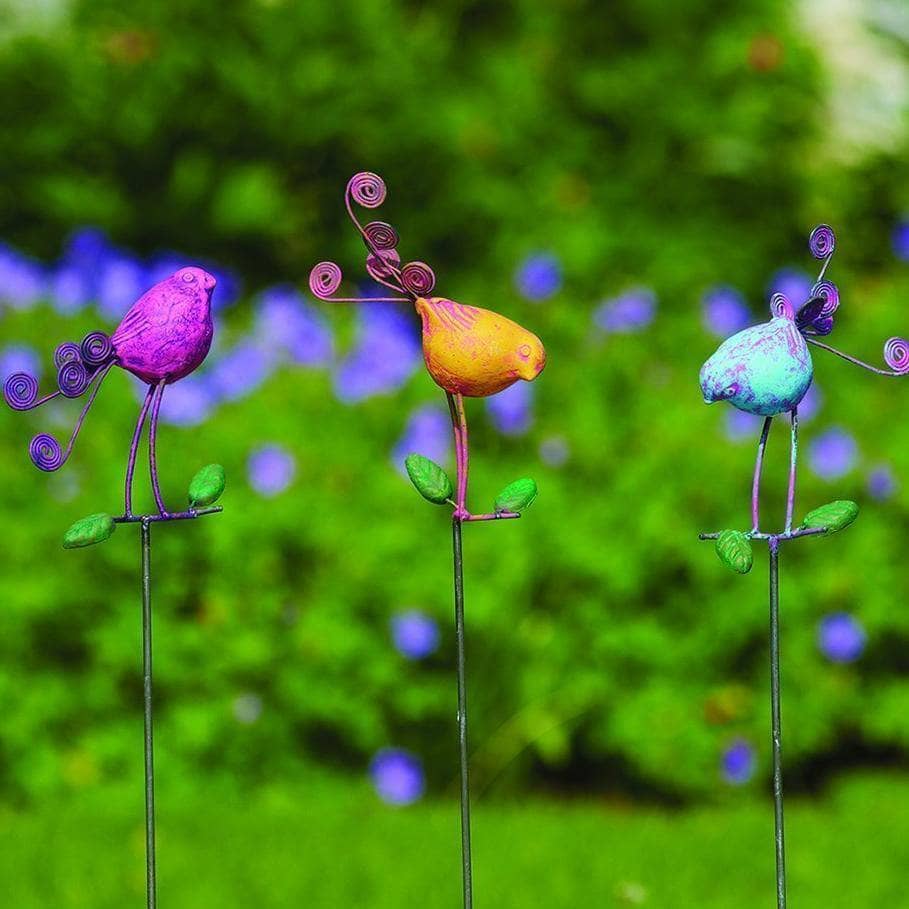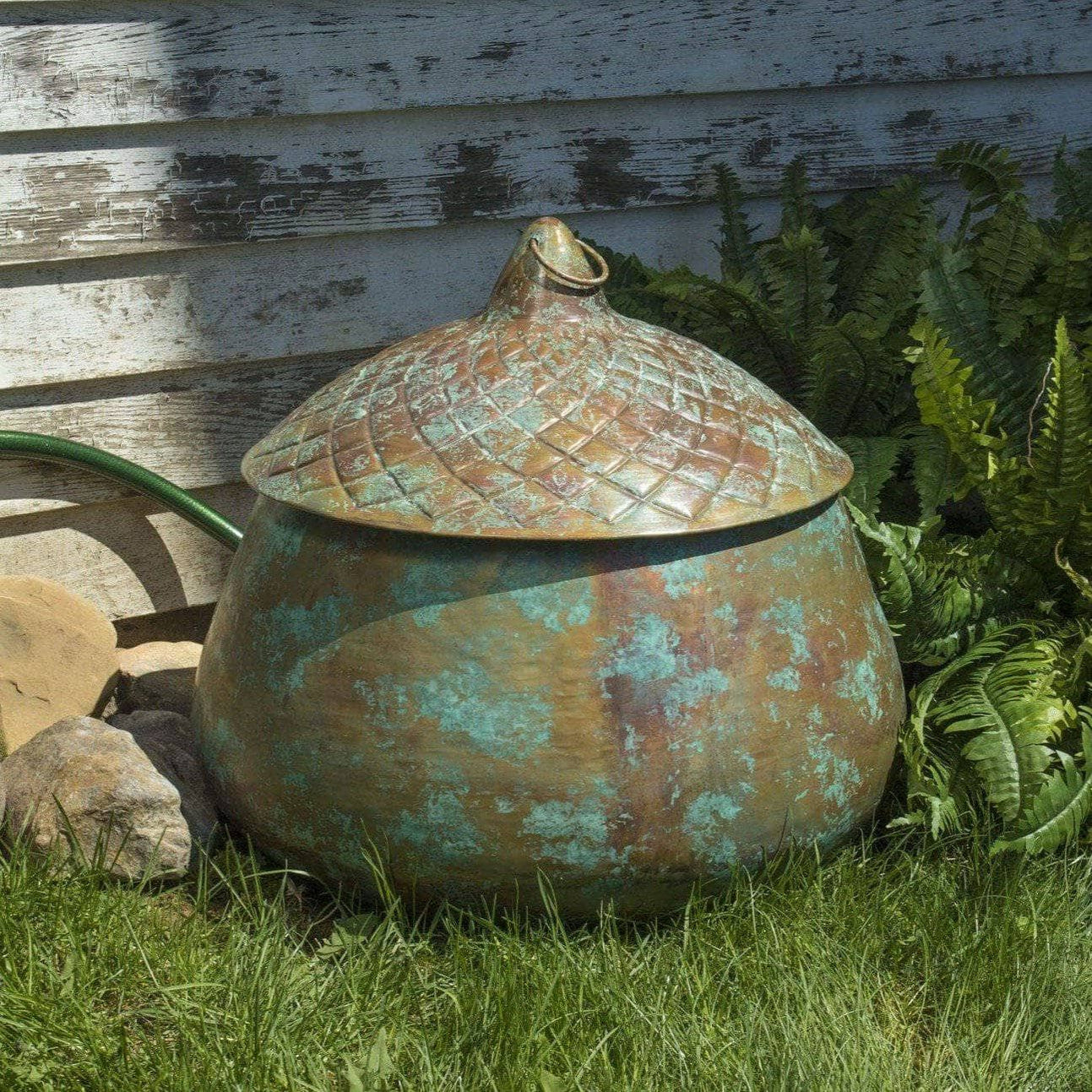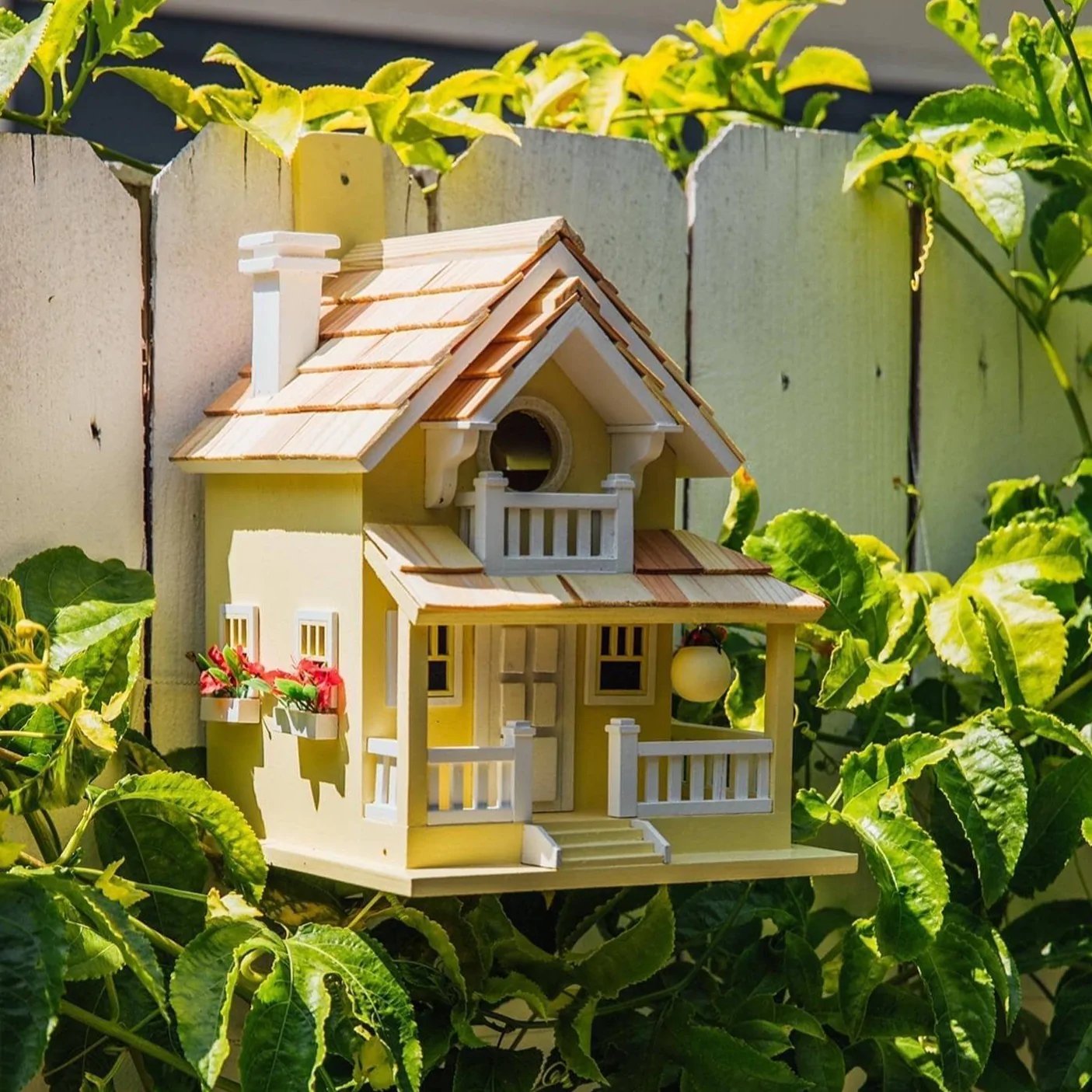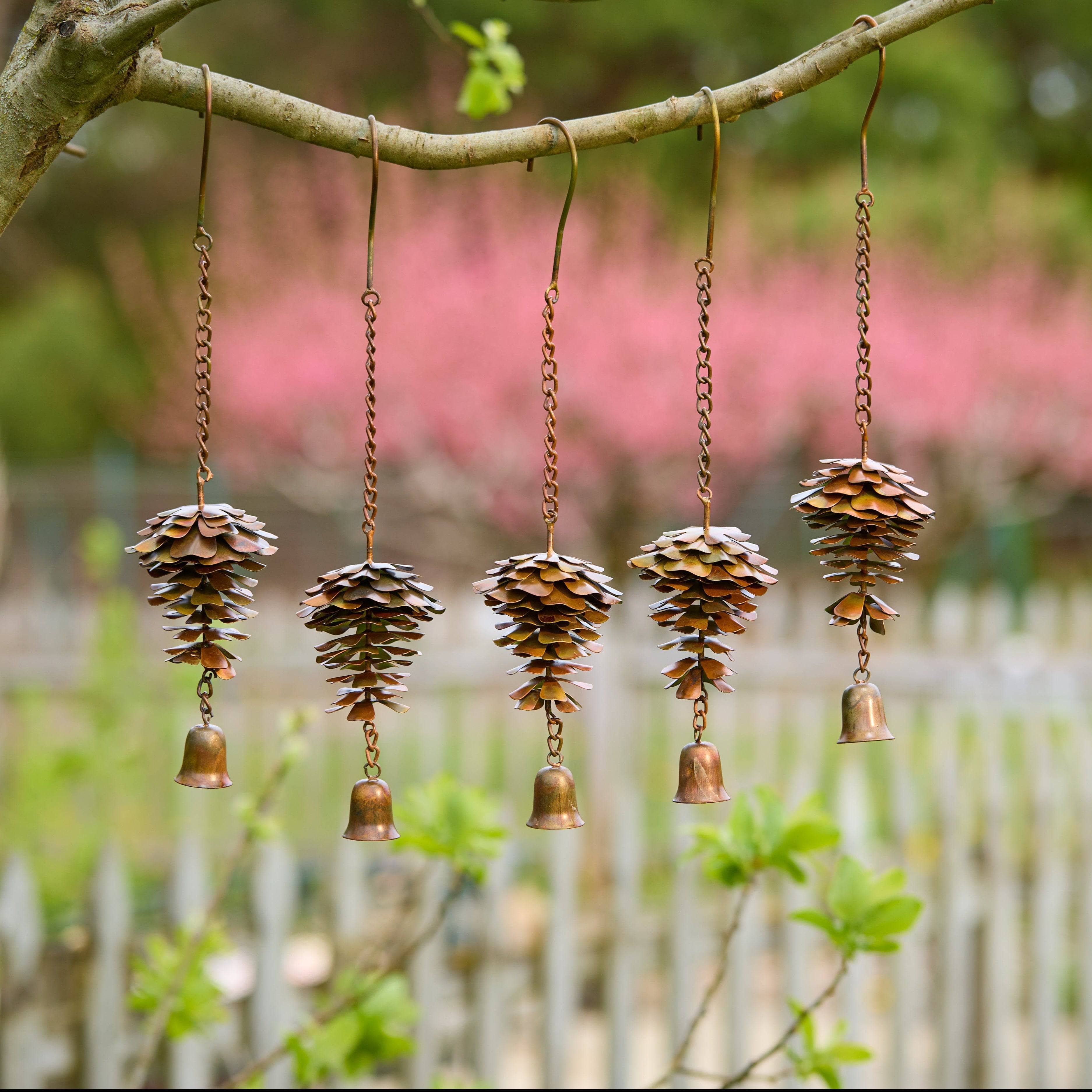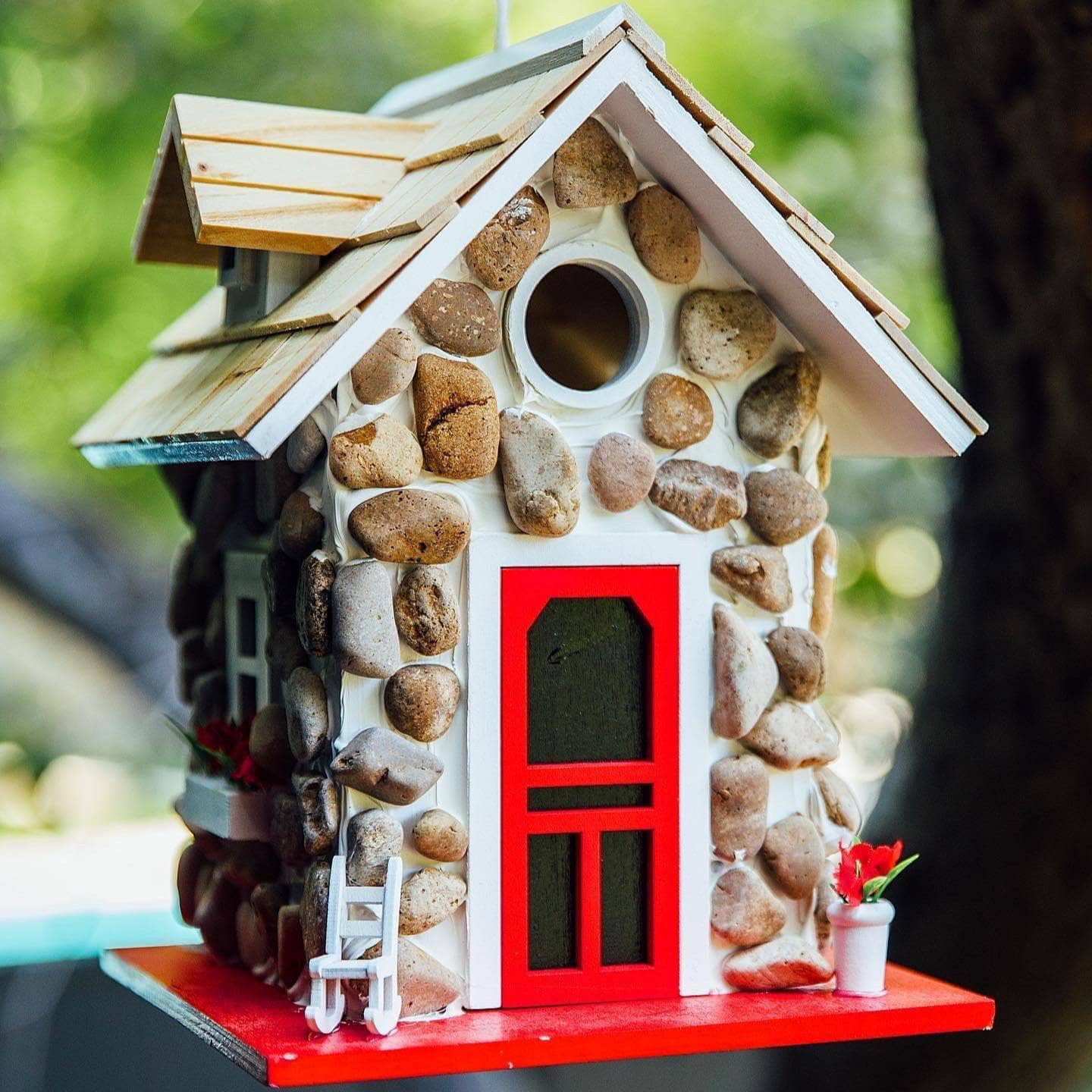
How To Get Rid of Crows For Good—and How A Wind Chime Might Help
Share
Here at Happy Gardens, we know how much you value your time in the Great Outdoors. So in this article, we'll dive deep into how to get rid of crows. There are many strategies—from deterring crows with wind chimes to investing in a good, ol' scarecrow. While you may have to employ some trial and error, there is sure to be a tip or two on our list that works for you.
But first, picture this. You're peacefully tending to your backyard veggie garden, admiring the bluejays and hummingbirds that visit your outdoor oasis—and then a flock of crows descends on your outdoor oasis. Unfortunately, this is a common problem.
After all, crows can be found almost everywhere in North America. They can thrive in woodlands, orchards, suburban neighborhoods, farmlands, and urban areas. Of course, these birds can have some positive environmental benefits: a family of crows can eat tens of tons of pests like caterpillars, grubs, and armyworms; boost forest growth by moving and spreading seeds, and serve as nature's free clean-up crew—because they eat dead animals.
But, the vast majority of the time, crows tend to be unwanted guests. They're absurdly noisy: think "caw caw caw"—and at full-blast to boot. Plus, their smelly and unsightly droppings can quickly soil and cover your lawn, garden, and porches—and can even spread disease. And, most of all, they're a threat to the gardens and lawns we work so hard to grow and maintain.
So, without further ado, let's help you get rid of crows for good. Or at least for a little while.
1. Remove or cover crows' potential food sources and trash

The first method to get rid of crows is pretty simple. It's addressing all their food sources head-on.
Crows are not picky eaters. They are true omnivores, and they'll eat just about anything—dog food, cat food, bird food, fish food, and even that old and moldy pizza crust from last weekend's takeout. Anything edible you leave outside is fair game. The same goes for both the garbage in your waste bin that the raccoons knock over at night... and all the delicious fruits and veggies growing in your garden.
Here are some related tips to help keep crows away, or at least deter crows for a little while:
- If you compost, only compost your yard waste, not your food scraps.
- Ensure your trash bins and recycling bins are covered and secured, so they don't get knocked over, spilling out a feast for the crows. To prevent tipping, try securing the bins' side handles to sturdy metal or wooden stakes that are driven into the ground.
- There are lots of different ways to secure the lids to your garbage cans safely. Try securing lids with heavy chains, rope, bungee cords, or weights. Consider putting locks on your compost, trash, and recycle bins. You can also buy special garbage cans and recycle cans with built-in locking clamps or similar mechanisms that hold lids on.
- Raccoons typically like to tamper with trash bins in the middle of the night. So, if possible, keep your trash bins in your closed garage or closed shed until morning, when raccoons have scurried away to get some shut-eye. (Ah, nocturnal living.)
- If you live near other people or a commercial establishment, ensure that all your neighbors follow the same guidelines for trash that will help keep crows away.
- If you do have a bird feeder, think about putting it away or covering it. You don't want to give pesky birds a convenient drinking station, and also, crow dropping could get in the water and contaminate it for others. Or only use bird feeders that exclude large birds.
- Don't decorate your porch and house using real produce. While genuine, carved-out Halloween pumpkins look festive—and wreaths featuring edible candy, fruits, and nuts are adorable—this will only attract more unwanted birds. Instead, to keep crows and other pests at bay, save your edible crafts for your indoor tablescape.
Take a look around your yard and deal with any low-hanging fruit (literally and figuratively.) Crows may come to your garden for the insects but stick around for whatever else they find. (Like your prized heirloom tomatoes.) While you may not be able to eliminate every possible crow food source outside, you can remove the quick-and-easy, grab-and-go meals that make your outdoor space so tempting.
Your goal: make the crows find a backyard with a better, more extensive menu.
2. Put bird feeders away, or get one that's pretty much crow-proof
You can buy special bird feeders that are only large enough to feed small birds like hummingbirds—larger birds, like crows. So if you have a crow problem, use a bird feeder that automatically closes when a bigger, heavier bird like a crow sits on it and tries to eat the feed. Or you can use a wire mesh feeder that will also exclude crows.
Also, make sure your bird feeder or is firmly secured and can't be knocked over, as crows will always (and we mean always!) snack on that spilled seed and feed.
You may also be interested in our How To Clean A Hummingbird Feeder article.
3. Tend to any trees where crows roost
Crows love to hang out and roost at the top of tall, thick trees. If you trim, thin, or remove the tall trees in your yard near gardens and food sources, the crows may relocate to somewhere else more hospitable.
Before tending to any trees where crows roost, first determine what type of tree you're dealing with it. Is it a street tree... one where crows have created roosts near homes or streets? If so, your best bet is to thin the side branches from these street trees, hoping that this will drive crows away.
But if you have crows roosting in a grove or foresty area, simply thin out about a third of the total trees. (Well, easier said than done.)
Remember that before you thin out or remove any trees, you should consult with a licensed, professional arborist to make sure you are following all laws. Plus, an arborist can help you make sure your trees look good after their haircuts. (No Edward Scissorhands, please.)
If you plan to plant trees and know your property has a crow problem, don't plant those trees too close to one another. This will just attract more crows! These birds especially t love dense trees that offer plenty of space for perching and protection from inclement weather.
If you avoid these canopies and keep your trees trimmed, then crows are more likely to flock somewhere else where there are more places to roost.
4. Use unpleasant noises to scare unwanted crows away

Different types of noise deterrents may be helpful to disperse crows. But keep in mind that these noises are unpleasant for both crows and humans. So if you have nearby neighbors (or a toddler in the house), check with them first before playing the loud audio.
Here are some sounds that may help make crows go away. Or maybe even get rid of them for good.
- An audio recording that sounds like crow distress calls—the squalling call a crow makes when struggling to get away from a predator like a hawk.
- An audio recording that sounds like the alarm call a crow will make to alert other crows in the area that a predator has been spotted.
- An audio recording that sounds like blasting cannons or fireworks.
Pro tip: Don't waste your time or money using high-frequency ultrasonic sounds above 20 kHz to scare away crows. Like humans, crows can't hear sounds at this frequency.
As we've mentioned before, crows are highly intelligent. If a crow hears recorded distress calls or predator calls but then sees that there is no predator or crow in distress, it will ultimately learn that the audio recording is a fake, get used to it, and stay put.
To try to outsmart these smarty birds—and make your crow deterrents more effective—change (daily, if possible) the area where you emit the scary audio recordings.
Also, the time of the day when you use audio deterrents is key. Crows are most easily scared when flying. And they're hardest to scare away when they're chilling in their roost. With this in mind, audio deterrent devices should be used when the first crows enter the roost—typically an hour to two hours before it gets dark.
Since the same group of crows may circle the roost before settling in for the evening, keep playing these audio deterrents until dark. Stop playing the sounds after dark... otherwise, the crows will get used to it and know it's a fake.
If possible, play the audio deterrent not just 90-or-so minutes before dark but as soon as crows start moving around in the morning. This is typically just before daybreak.
5. Let your sprinkler system do the hard work for you
Crows don't like getting drenched with a surprise spray of water. We can't think of anyone who does. (Besides kids at a birthday party, maybe.) Make your environment less cozy for crows by using a motion-sensor sprinkler. Hopefully, this will scare them away.
Sprinkles appear to be effective at scaring crows away because it combines an unpleasant physical sensation (getting drenched) with quite a startle! Since this device only sprays water when motion is detected, it helps save water and energy. As a bonus, hey, you watered our lawn, too.
6. Use wind chimes to keep crows off your property
According to the Cambridge dictionary, a wind chime is "an arrangement of shells or small decorative shapes of metal or wood that hang from pieces of wire or string and make a gentle noise when moved by the wind." (But as a Happy Gardens reader, we bet you already knew that!)
And while outdoor wind chimes are pretty, they do more than just act as decoration.
If you have a crow problem, try hanging wind chimes in trees and other areas where crows gather on your property. The wind chime's rattling and clanking noise act as an audio deterrent to keep crows away.
Are you looking for a wind chime to call your own? Our Happy Gardens shop features tons of wind chimes that are gorgeous, unique, and perfect for deterring pesky birds.
7. Scare crows away with a scarecrow or other decoy

Use a visual deterrent such as a scarecrow or a fake crow hung upside down to spook crows away.
When most people think of scarecrows, they think of the scarecrow in the classic American film The Wizard of Oz that was first released in 1939. However, scarecrows have been around much longer than this Hollywood film classic.
Three thousand years ago, the Egyptians hung tunics on poles to scare birds like quail and other pests from eating crops planted along the Nile River. The ancient Greeks also created wooden statues that resembled Priapus, who was the Greek god of fertility, to stand in fields and frighten birds away from eating and destroying crops.
The Japanese also erected Kuebikoto, a ragged-looking scarecrow figure, to keep sparrows from eating the rice in the rice paddies. (Scary-sounding, we know!)
Scarecrows are human-shaped and can be constructed from inexpensive materials. However, since they are motionless and crows are smart, they typically offer only limited and short-term protection in scaring crows away.
For better results, frequently change the location of the scarecrow on your property, use a scarecrow with a motion sensor and moves and spins when approached by crows, and combine the scarecrow strategy with all the other methods we're talking about today.
8. Cover your crops, garden, or even your trash with bird netting
Hey crows, this isn't a communal garden! If pesky crows are snacking on your crops, try covering them with bird netting.
To keep crows away from your fruit and veggies, trying protecting them with flexible bird netting made from mesh that can be purchased at most garden centers or hardware stores. The four-inch mesh size netting is recommended because it will keep big crows out but still let smaller birds like hummingbirds slip through the mesh holes.
You can find netting at your favorite hardware store or local garden center. Most experts recommend a four-inch mesh because it keeps crows out.
To install bird netting, a cable support structure is usually installed on the structure with a heavy-duty steel attachment. The netting is then stretched tightly and attached to the cable support structure to exclude the targeted pesky crow bird.
Try to place netting at the base of a plant or the trunk of a tree, too. That's just another way for crows to sneak in!
9. Protect seedlings with fabric row covers.
Use fabric row covers to protect your precious seedlings from crows. You can purchase fabric row covers at your local garden or hardware store. Use the fabric to cover seedlings in your garden that crows like to snack on.
Make sure the fabric is thick enough to keep crows out but translucent and porous enough to let water and sunlight in so that your seedlings can grow. Most seedlings won't thrive if the fabric row is actually touching it, so you may need to construct a support structure out of wire hoops, bent PVS piping, or rebar to hold the fabric row in place above the seedlings.
10. If you're growing corn, cover it with paper cups or bags

While crows will eat just about anything, their favorite food is corn. (It seems like we've got something in common with crows!) So if you're growing corn, try placing paper cups or bags over corn ears once the silk has turned brown. That way, you can protect your crops and maybe even get rid of or deter crows.
The same goes for fruit trees and anything else you're growing in your outdoor space. To truly discourage crows, you're going to have to keep them away.
11. Use balloons, CDs, reflective tape, or anything else shiny to scare crows away
For some reason, shiny, reflective objects scare crows. Some people think that it's because crows are scared of their own reflection. Sounds plausible— there have been many a day our own reflections have given us quite the fright.
Try using holographic flash tape, a reflective tape made out of commercial-grade Mylar. Cut it down and attach it to branches, plants, vines, and other visible and elevated structures on your property. This highly reflective and shiny tape creates a visual deterrent that scares crows away. Additionally, the flash tape moves in the breeze, making an unpleasant crinkling noise which also scares crows and will ideally scare them away.
If you don't have holographic flash tape, try using shiny Mylar balloons, CDs, or aluminum pie tins hung on a string. Or even try strips of aluminum foil placed on structures and trees on your property where crows like to hang out.
12. Don't poison, shoot, or try to capture crows
We know you would never, ever do this. But just to hone in on this point, it must be said that you should never attempt to hurt or kill crows using bird spikes, poison, bullets, or any other means. These methods are dangerous, inhumane, and often against the law.
When it comes to crow deterrents, you'll want to choose a solution that's both safe and effective. After all, these birds might be pesky, but they're just animals. And
About Happy Gardens
Happy Gardens curates an online collection of unique, thoughtful outdoor decor and merchandise. Whether you've been searching high and low for an adorable bird house, a unique wind chime, or a charming rain chain, Happy Gardens has what you're looking for. After all, each product we stock and sell has been chosen to fill your outdoor space with charm and cheer. (Especially if you love birds.)
Our beloved collections include a remarkable variety of top-rated, beloved products, including rain gauges, bird baths, funky wind chimes, and cool ornaments and statues made from metal, stone, and more. Plus, our new line of merchandise is bright, exciting, and great for gift-giving. Check out our wine glasses, tote bags, and mini planters for all the garden, bird, and plant-lovers in your life.
Want to learn more about our newest and coolest products? Join our mailing list with your email address. Want to bring some good vibes (and tons of tips and tricks) to your newsfeed? For tons of garden inspiration and your daily dose of greenery, follow us on Instagram and Facebook.
We're always here to help via chat if you need help picking out that perfect gift, redecorating your outdoor space, or choosing the right garden decor.
